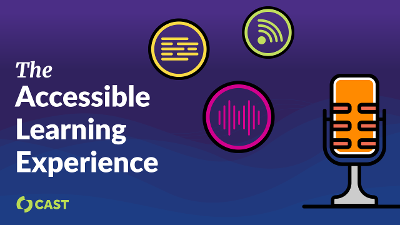Showing results 161-170 of 178 for accessible technologies
Search results
-
Explore a sample Accessibility Conformance Report (the completed version of a Voluntary Product Accessibility Template), with tips on how to interpret and use the information provided in each section.
-
Presentation

Monday, July 18 – Thursday, July 21, 2022
This session highlights the progress being made in Oklahoma to build and sustain a coordinated system for providing AEM and accessible technologies for learners with disabilities across early childhood, P-12, higher ed, and workforce training. Promising practices and resources that can be adapted for immediate use by other states will be shared.
-
Podcast

National AEM Center at CAST, 2023
Meet the authors of Inclusive Learning 365: Edtech Strategies for Every Day of the Year and listen in on their conversation about the importance of an inclusive mindset.
-

Learn how to create accessible documents and slide decks with familiar tools such as Microsoft Word and Google Suite.
-
Presentation
1:15PM – 2:05PM ET on Saturday, December 2, 2023
This session explores four myths about literacy learning: 1) Some children with disabilities do not need to learn to read and write; 2) Using speech to communicate is a prerequisite to reading and writing; 3) Children cannot have an intellectual disability and a reading disability; and 4) Using assistive technology (AT) to read and write is cheating.
-
Webinar
2:00PM – 3:00PM ET on Thursday, May 16, 2024
Join CAST and SETDA for a comprehensive look at Universal Design for Learning (UDL). This webinar dives into the UDL framework, emphasizing its principles and practical application in education. Discover how UDL aligns with the 2024 National Educational Technology Plan (NETP), fostering inclusive and engaging learning experiences. Be part of the conversation to create an adaptive, inclusive future for all learners!
-
Podcast
National AEM Center at CAST, 2024
On this episode, Diana Garcia Mejia shares many practical tips and ideas for ensuring young learners with visual impairments get off to a strong start in their educational journey.
-
Webinar

2:00PM – 3:00PM ET on Tuesday, May 18, 2021
Let the AEM Center's technical assistance team introduce you to our new website.
-
Learn about the responsibilities of state education and local education agencies (SEAs and LEAs) related to the provision of accessible formats from NIMAS files.
-

Learn how to make your content operable by including descriptive headings, creating descriptive links and more.
